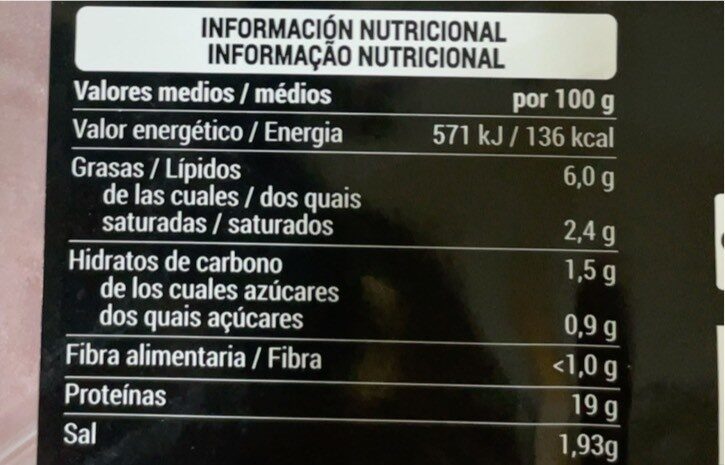Jamón cocido - Noel - 120 g
Aquesta pàgina del producte no està completa. Podeu ajudar a completar-la editant-la i afegint-hi més dades a partir de les fotos ja disponibles, o fent-ne més amb l'aplicació de androide o iPhone / iPad. Gràcies!
×
Codi de barres: 8410783333417 (EAN / EAN-13)
Quantitat: 120 g
Marques: Noel
Categories: Productes amb base de carn, Carns, Carns preparades, Pernil, Pernil dolç
Etiquetes, certificacions, premis:
Lliure de gluten, Punt verd, Sense colorants, Sense lactosa
Matching with your preferences
Entorn
Petjada de carboni
Empaquetament
Transport
Report a problem
Fonts de dades
Producte afegit per kiliweb
Última modificació de la pàgina del producte per naruyoko.
La pàgina del producte, també editada per acuario, ecoscore-impact-estimator, elcoco, moon-rabbit, musarana, openfoodfacts-contributors, roboto-app, teolemon, yuka.IqhGZtygBpMTGMHg99gx4B2hOO7GUv1DFVAfoQ, yuka.J4geDISsLsUhOsfx87se7TGYTMfLKfkHMSYXog, yuka.UKlIFvywEtQIHsbIj7Ap5R2aJe7iGtFGQS4Hog, yuka.VZ5TBs6HMv0_JPfR4YMf8grjS-j_DP5oCiUGog, yuka.XatHOf2hPu4gEvPu9pAmwziLMtflAdFEHW4Hog, yuka.YTUwQUlva1FyS0VvcXZJNC9ocmZxdEphbWFDRVdtQ2RGZGM2SVE9PQ, yuka.sY2b0xO6T85zoF3NwEKvlktcU8XApA7cB0DlyVCt-tePCJazZfRC46Tdaqs, yuka.sY2b0xO6T85zoF3NwEKvlnxKYvXT-xnGCi7RtRXRnfS1Er62QMko2KvgN6s.











